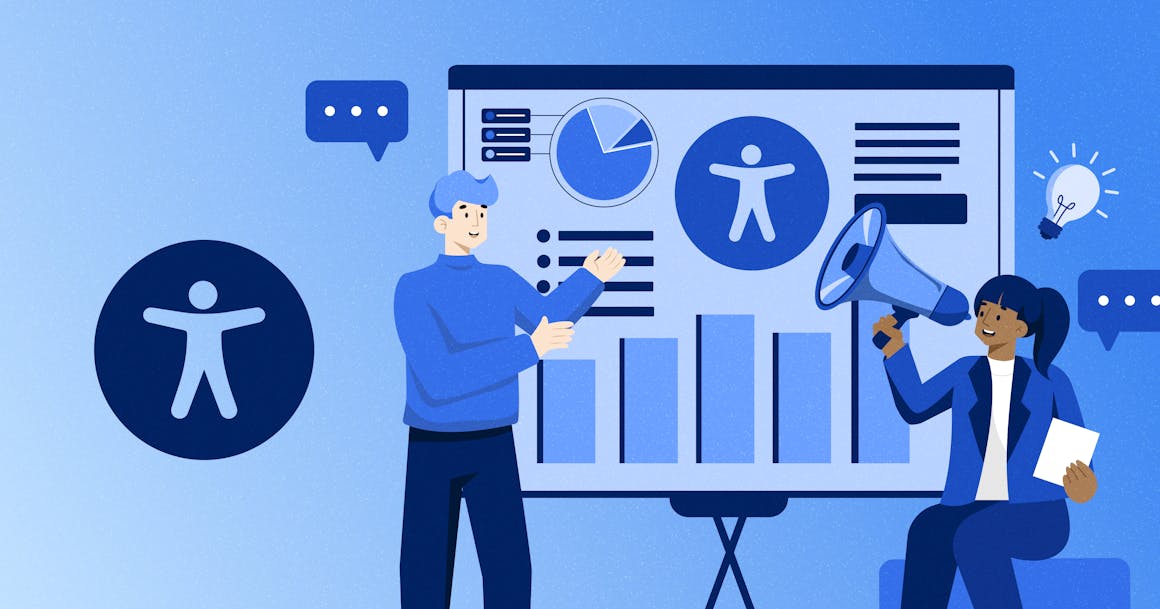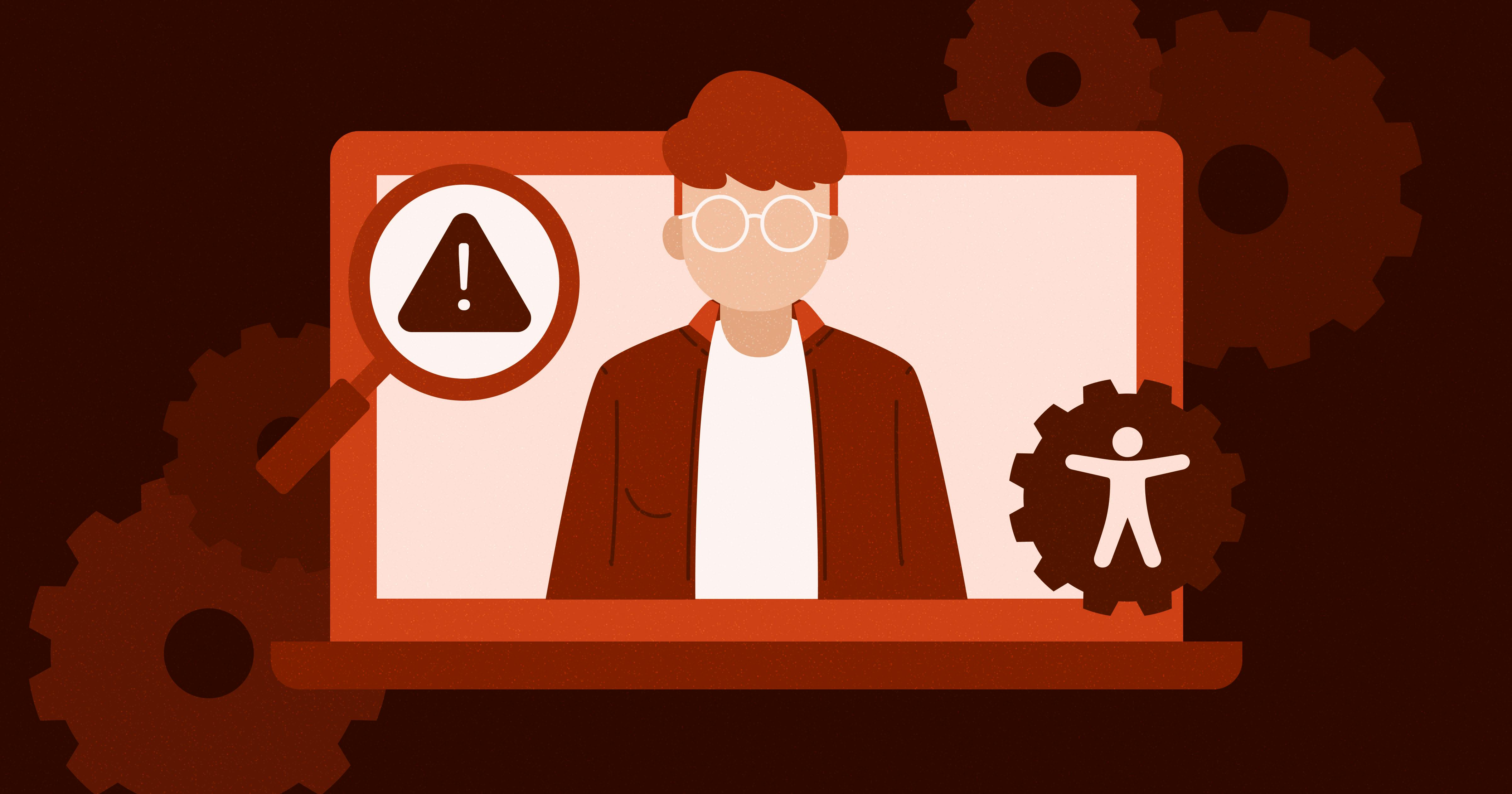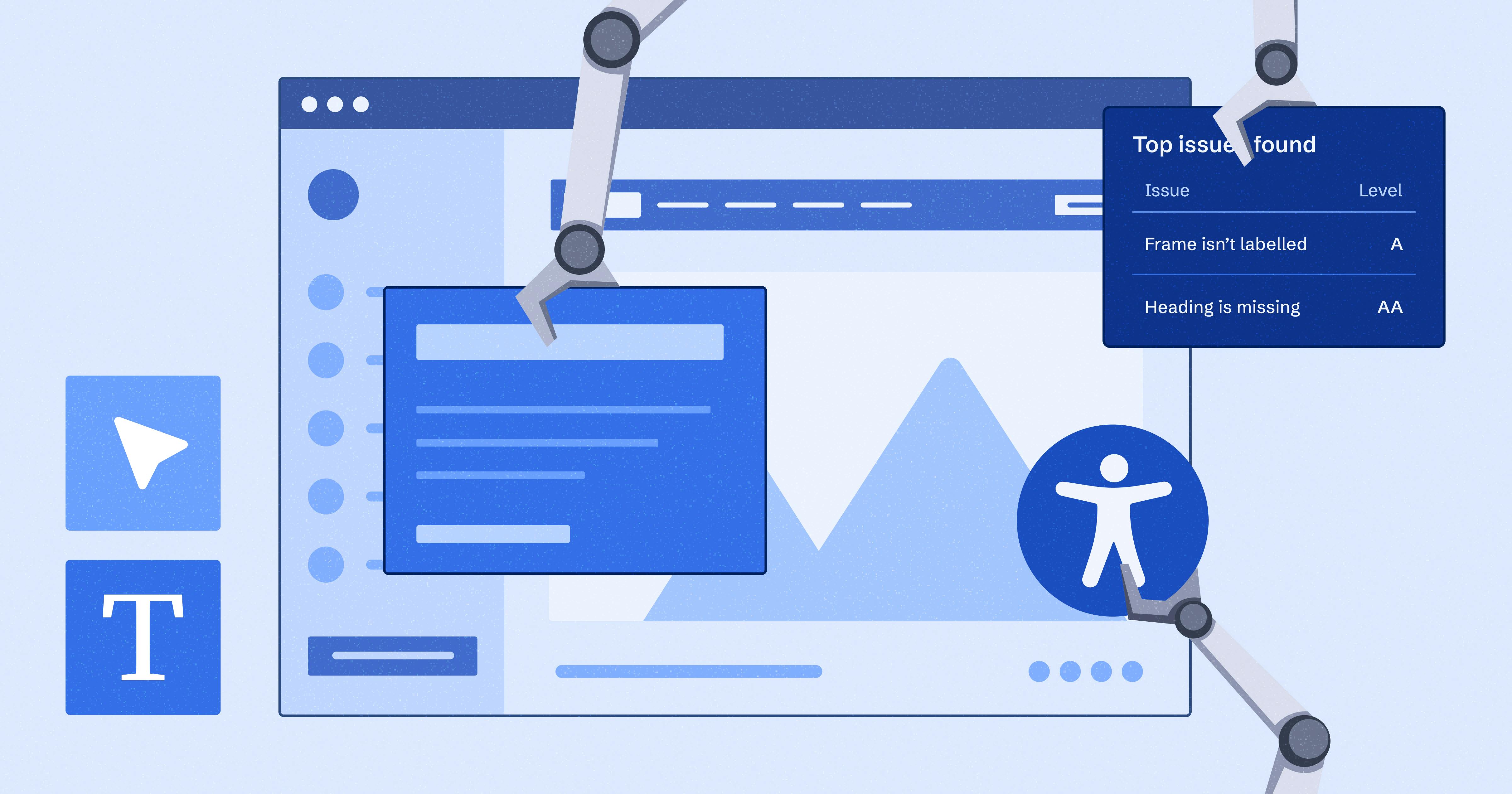- A Collaborative Approach to Accessibility
- Advancing Accessibility Through Innovation: AI, Automation, and Emerging Technologies
- Continuous Learning and Ideation: A Foundation for User Inclusion
- Supporting Accessibility Through Standards, Regulations, and Developer Tools
- Setting the Gold Standard for Digital Accessibility
Advancing Digital Accessibility Through Trust, Technology, and Community


Ready to see AudioEye in action?
Watch Demo
This year, AudioEye has made progress in improving web accessibility. They launched tools like the Accessibility Help Desk and AudioEyeQ, using AI to fix website issues and make them easier for everyone to use. By working with accessibility experts and offering free training, they’re helping businesses create more inclusive digital spaces. AudioEye is shaping future standards and staying committed to building a web that works for all.
The past year at AudioEye has been one of transformation fueled by a commitment to collaboration, trust, and vision. Our collective efforts have not only shaped our products and services but also reinforced our belief that accessibility is more than just one-time compliance — it is a journey of continuous improvement, innovation, and human-centered design.
A Collaborative Approach to Accessibility
One of the most notable advancements at AudioEye this year has been our commitment to redefining the conversation around digital accessibility. We’ve embraced a holistic approach prioritizing integration, collaboration, and trust. By working alongside other accessibility leaders, sharing knowledge, and participating in key industry events, we’ve continued to drive meaningful progress and innovation in this critical space.
In 2024, we launched three major initiatives influenced by feedback from the community and our A11iance team: the Accessibility Help Desk, AudioEyeQ, and Software Development Toolkit (SDK). These efforts reflect our commitment to working with people with disabilities and experts in accessibility to ensure our approach is comprehensive and effective. Furthermore, our participation in industry consortia, such as the W3C, ATIA, and IAAP, continues to help us shape the future of accessibility standards.
In parallel with these initiatives, our Hearsay podcasts have helped amplify our message of trust, collaboration, and vision, creating an ongoing dialogue with industry thought leaders and the broader accessibility community. These honest conversations have addressed common challenges organizations face and perspectives on how we, as an industry, can make a dent in the internet’s inaccessibility.
Additionally, we’ve made significant improvements to our quality assurance (QA) and usability processes by increasing the involvement of our A11iance team, which tests customer sites using assistive technologies throughout the software development lifecycle (SDLC). Their insights have been invaluable in ensuring that our products are tested and refined from a user-first perspective, meeting the needs of people with disabilities.
Advancing Accessibility Through Innovation: AI, Automation, and Emerging Technologies
Accessibility must evolve alongside technological advancements. This year, we made significant strides in integrating AI and automation into our accessibility solutions, pushing the boundaries of what’s possible. A pivotal shift has been our transition from our Visual Toolkit to the Accessibility Help Desk, which I wrote about late last year. The updated and newly designed Accessibility Help Desk has two purposes:
- Issue reporting: Users can now report accessibility issues to AudioEye as soon as they open the Help Desk — a unique feature that simplifies access and ensures AudioEye quickly fixes any issues reported.
- Personalization tools: Simplified navigation allows any user to easily make temporary adjustments to the appearance of web content.
I want to point out that these personalization capabilities available through the Accessibility Help Desk are not meant to be the end-all solution to accessibility. They are not assistive technology tools, nor are they intended to replace assistive technology used by individuals with disabilities. Rather, these features serve a broader user base with temporary or situational needs.
Additionally, AI has played a central role in our journey toward greater accessibility, particularly in our efforts to identify and automatically fix as many high-impact issues as possible. By fine-tuning our validation and rule sets for automated fixes, we’ve increased both the performance and quality of our solutions, ensuring that the end-user experience is seamless, efficient, and truly inclusive.
This increased focus on AI-driven automation has allowed our customers to tackle accessibility at scale while showcasing transformative results driven by technology, especially when paired with testing by our accessibility experts. Automation alone can find and identify only a portion of issues, making the human touch a critical part of achieving accessibility compliance. We believe AI-driven technology in tandem with expert audits and custom fixes, rounds out a more comprehensive accessibility solution.
In 2024, we also celebrated the launch of our Accessibility Protection Status, a new benchmark in digital accessibility compliance that empowers businesses to achieve greater transparency, clarity, and control over their digital accessibility efforts. With a more accurate representation of accessibility beyond arbitrary numerical scores, this innovation provides companies with a clear path for digital accessibility compliance.
Continuous Learning and Ideation: A Foundation for User Inclusion
At the core of AudioEye’s mission is the belief that accessibility isn’t just a set of technical tasks — it’s a mindset. This past year, we’ve strongly emphasized continuous learning and ideation as the foundation of a more inclusive future. Our team has worked tirelessly to create a customer-focused knowledge base known as AudioEyeQ that provides clear, actionable resources for organizations looking to improve their digital accessibility.
Within AudioEyeQ, we developed the Foundations of Accessibility: CPACC Preparation course, a free, interactive course designed to prepare professionals with the knowledge and skills necessary to become a Certified Professional in Accessibility Core Competencies (CPACC). This course has received positive feedback from those looking to deepen their understanding of accessibility principles and make a tangible impact in their organizations. We’ve since launched additional courses on Strategic Accessibility Leadership and Accessible Design, with additional classes for accessible coding and testing being released soon.
AudioEye has also been active at the forefront of industry discussions on ADA Title II compliance, participating in speaking sessions and panel discussions at industry-sponsored conferences. Through these engagements, we have raised awareness of the need for accessible digital environments and demonstrated how organizations can meet compliance requirements while embracing the broader benefits of accessibility.
Supporting Accessibility Through Standards, Regulations, and Developer Tools
As advocates for a more accessible world, we have remained deeply involved in shaping the future of web accessibility standards and regulations. Our participation in organizations like the W3C/WAI and IEEE has allowed us to actively contribute to the creation of standards that will guide the next generation of digital accessibility solutions. Additionally, we’ve lent our expertise to lobbying efforts, including leading the CAL 1757 Accessibility Standard lobbying initiative, which aims to enhance accessibility for Californians with disabilities.
In Colorado, we played an instrumental role in revising the OIT State Accessibility Procurement Guidelines, helping to ensure that state agencies can procure digital solutions that are truly inclusive and accessible. These efforts are a testament to our belief that accessibility is not just about individual products but about creating an ecosystem of standards, regulations, and tools that empower businesses to make real change.
One of the most exciting developments this year has been the release of the AudioEye Software Development Toolkit (SDK). This tool provides developers with a source code analyzer that identifies and notifies them of errors and bugs in real-time. It allows them to integrate accessibility into their own applications, furthering our mission to make accessibility a seamless part of the development process.
Setting the Gold Standard for Digital Accessibility
As we look ahead to another year, we are encouraged by the progress we’ve made and energized by the possibilities that lie ahead. At AudioEye, we are committed to driving forward the digital accessibility conversation, advancing technologies that make the web more inclusive, and fostering a culture of collaboration, trust, and innovation.
Looking ahead, we remain steadfast in our mission to create a web that works for everyone. Whether it’s through advancing our technology, partnering with the disability community, or shaping future standards and regulations, AudioEye will continue to lead with trust, transparency, and vision. Together, we can build a digital world that’s both accessible and usable by all.
Ready to see AudioEye in action?
Watch Demo
Ready to test your website for accessibility?
Share post
Topics:
Keep Reading

How to Test Website Accessibility Without Automation Tools
Accessibility testing your site without automation can be costly if done wrong. Understand how to go about it, and why a hybrid approach may be better.
accessibility
April 02, 2025

AI Accessibility Tools: Benefits, Limitations, Applications, and Recommendations
AI makes finding and fixing accessibility issues faster and easier, but do they ensure compliance and great UX by themselves? Here’s our verdict.
accessibility
March 31, 2025

Improving Healthcare Delivery: How Quality Tech Products are Shaping the Future of Care
Discover how high-quality tech products are transforming healthcare delivery, improving patient outcomes, and future-proofing the industry. Learn key tech innovations and why accessible, inclusive design is critical.
accessibility
March 26, 2025
